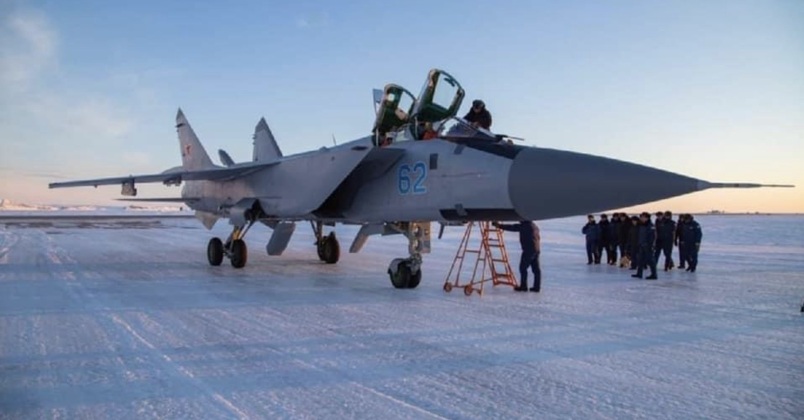News
U.S. Initiates F-35 Stealth Presence Deep in the Arctic Circle: Unprecedented Greenland Base Deployment
The U.S. Air Force has conducted its first ever deployment of F-35 stealth fighters to Thule Air Base in Greenland, which represents the Pentagon’s northernmost base facility and is well positioned to place further pressure on Russian forces in the Arctic. The facility is located 1200km north of the Arctic Circle, and hosted the F-35s as part of the North American Aerospace Defence Command (NORAD) exercise Operation Noble Defender which took place from January 15 to January 31. The exercise was described by the Pentagon as “a series of long-planned NORAD operations validating the command’s capability and readiness to defend the United States and Canada against threats from every avenue of approach, in any environment, and demonstrate the ability to integrate with other defence and security partners for a holistic defence of North America.” F-35s involved were drawn from the 356th Fighter Squadron based at Eielson Air Force Base in Alaska, which is the closest facility hosting fifth generation aircraft. Other assets involved included a B-52H strategic bomber, four KC-135 transports, one CC-150 aerial tanker, and a E-3 Airborne Warning and Control System (AWACS), as well as CF-18 Hornet fourth generation fighters from the Royal Canadian Air Force. As the F-35 forms a fast growing portion of the American fighter fleet, Canada is also set to replace its F-18s with the next generation jets.

Thule Air Base was built in secret in the early Cold War years to serve as a staging ground for nuclear attacks on the Soviet Union. The F-35 today is the only fighter of its generation armed with nuclear weapons, and with support from tankers and other support assets it could similarly be used for nuclear attacks on Russian targets capitalising on its advanced stealth and network centric warfare capabilities. Surveillance assets located at Thule also serve to provide early warning of Russian ballistic missile launches which would fly over the Arctic to reach the United States. As the U.S. and other NATO members have expanded their presences in the Arctic, Russia has also strengthened its own defences with deployments of S-400 and more recently the new S-500 air defence systems, MiG-31BM/BSM interceptors and MiG-31K and Su-34 strike fighters among a range of other assets. The U.S. Air Force in 2021 made its first deployment of B-1B bombers inside the Arctic Circle with a deployment to Norway’s Bodø Air Base, although one of the bombers suffered serious engine damage raising questions regarding their suitability for the extreme climates. Russia responded by deploying MiG-31s to the Novaya Zemlya archipelago above the Arctic Circle, capitalising on the class’ high suitability for extreme weather.

The F-35 provides a notable edge over Russia’s frontline combat aircraft due to its next generation capabilities and stealth, with only the Chinese J-20 considered a true peer level competitor. The two are the only fighters of their generation fielded at squadron level strength, other than the ageing F-22 which has seen its avionics fall behind and has been out of production for 12 years. The troubled aircraft are scheduled to begin retirement later in 2023. Russia’s own fifth generation fighter, the Su-57, has only ten airframes in service and is not expected to have a major presence in the Arctic until close to 2030. The Su-57 notably has a much higher endurance than the F-35 as well as a supercruise capability, but is less stealthy than its Chinese and American rivals. It has seen levels of high intensity combat testing far beyond those of the J-20, F-22 or F-35 due to the ongoing Russian-Ukrainian War.
The F-35 itself, despite its high potential, is still considered far from ready for high intensity combat, with the Pentagon accordingly refusing to certify it for full scale production. Very wide ranging performance issues have drawn widespread criticism to the fighter program by both military and civilian officials. The U.S. Air Force’s Deputy Chief of Staff for Strategy, Integration, and Requirements, Lieutenant General Clint Hinote, for one, stated in mid 2021 that the fighters would be effectively useless in any peer level conflict, with Marine Captain Dan Grazier having highlighted “a host of alarming problems” and “the F-35’s lack of progress in nearly every essential area” to bring it closer to a combat ready state. Assuming current issues with the aircraft can be addressed, despite very significant delays in doing so, the F-35 could revolutionise the capabilities of NATO’s frontline units and significantly increase pressure on the defences of potential adversaries such as Russia, China and North Korea.












